-
1. What was Queen Victoria's Birth Name?
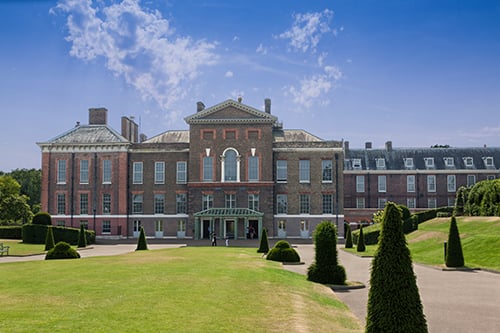 Answer: Alexandrina Victoria
Answer: Alexandrina VictoriaVictoria was born in Kensington Palace on 24 May 1819 and was christened Alexandrina Victoria but, from birth, was known as Victoria.
Before she became queen, she was formally addressed as Her Royal Highness Princess Victoria of Kent.
-
2. Who designed the Iron Bridge in Shropshire?
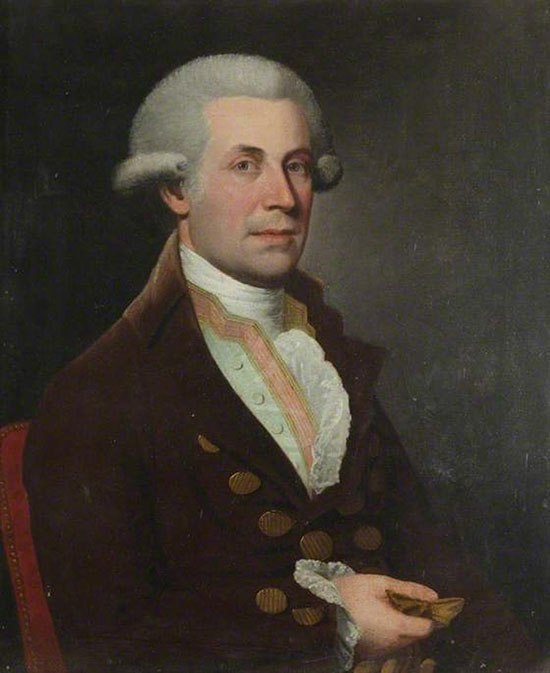
Answer: Thomas Farnolls Pritchard
As industry around the gorge grew, so did the need for a strong and durable bridge to transport goods across the river. In 1773, Thomas Farnolls Pritchard - an architect from Shrewsbury - had a bold idea. Combining engineering expertise and new iron-casting techniques, he proposed the world's first iron bridge, which would link the parishes of Madley and Benthall over what was one of the busiest rivers in the country. Pritchard's designs were approved by Act of Parliament.
Image: Portrait of Thomas Farnolls Pritchard by an unknown artist.
-
3. WHO DID THE ENGLISH DEFEAT AT THE BATTLE OF FLODDEN IN 1513?
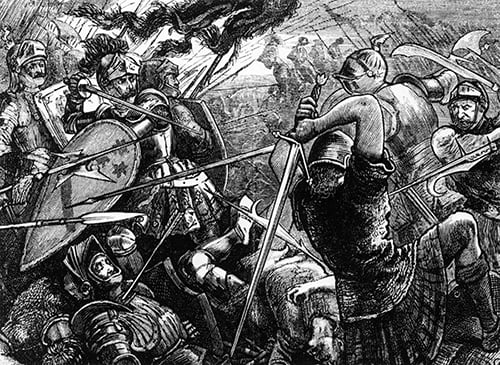
Answer: Scotland
In the largest ever clash of arms between the two countries, James IV's invading forces were decisively beaten by English troops at Branxton in Northumberland.
The English infantry, armed with hook-bladed bills, killed 10,000 Scots, including James himself, who was the last British monarch to die in battle.
-
4. Which city was the capital of the Anglo-Saxon Kingdom of Wessex?
Answer: Winchester
The Anglo-Saxon kingdoms of Wessex, East Anglia, Mercia and Northumbria were united under the English banner by Æthelstan in the 10th century, with the most southerly and powerful, Wessex, remaining the final Anglo-Saxon stronghold after the Viking invasion of 865 AD. Though Æthelstan's father, Alfred the Great, held court at various towns across Wessex, Winchester was described as the "premier city of the West Saxon kingdom".
-
5. What is the name of the Englishman who translated the Bible into English?
Answer: John Wycliffe
The Yorkshireman was a prominent voice of dissent in the 14th century, attacking the privileges, power and pomp of the clergy and arguing that the Bible should be made available in the native English tongue. So committed was he to the latter, that he and his associates translated both testaments into Middle English between 1382 and 1384. His following and legacy would be important in the Reformation two centuries later.
-
6. What's the better-known name given to the Great Rising of 1381?
Answer: Peasants' Revolt
Tensions were high in England following the Black Death and an increase in taxes to fund the Hundred Years' War, and when official John Bampton's attempt to collect unpaid taxes led to violence, it sparked revolt across the South East.
A mob, led by Wat Tyler, set fire to buildings and killed royal officials in London, leading the 14-year-old Richard II to meet their demands, which included the unfair practice of serfdom. The young king met the rebels on 13 June, speaking to them in their own English tongue, however, violence broke out and Tyler was killed. Eventually the mob was dispersed and Richard II rescinded on his promises.
-
7. Which country did Britain fight in the War of Jenkin's Ear?
Answer: Spain
The mainly-naval conflict was fought between the two European empires from 1739 to 1748 due to various attempts at expansion into each other's territories, but got its name due to an incident in 1731 off the coast of Florida.
The British brig Rebecca was boarded by Spaniards, who cut off the ear of the captain Robert Jenkins after accusing him of being a smuggler. After recounting his tale seven years later, Parliament concluded that it was an insult, however, it did not lead to the war - in fact the conflict was not referred to as the War of Jenkins' Ear until 110 years after it had finished.
-
8. Which two wives did Henry VIII divorce?
Answer: Catherine of Aragon and Anne of Cleves
The rhyme 'Divorced, Beheaded, Died, Divorced, Beheaded, Survived' is an easy way to remember what became of Henry VIII's six wives. He divorced his first, Catherine, after she failed to produce a son and also so he could marry Anne Boleyn. He found his fourth wife, Anne of Cleves, so unattractive that he had the marriage annulled after only six months.
-
9. Ed Sheeran's song, Castle on the Hill, which reached number two in 2017, was inspired by which castle?
Answer: Framlingham Castle
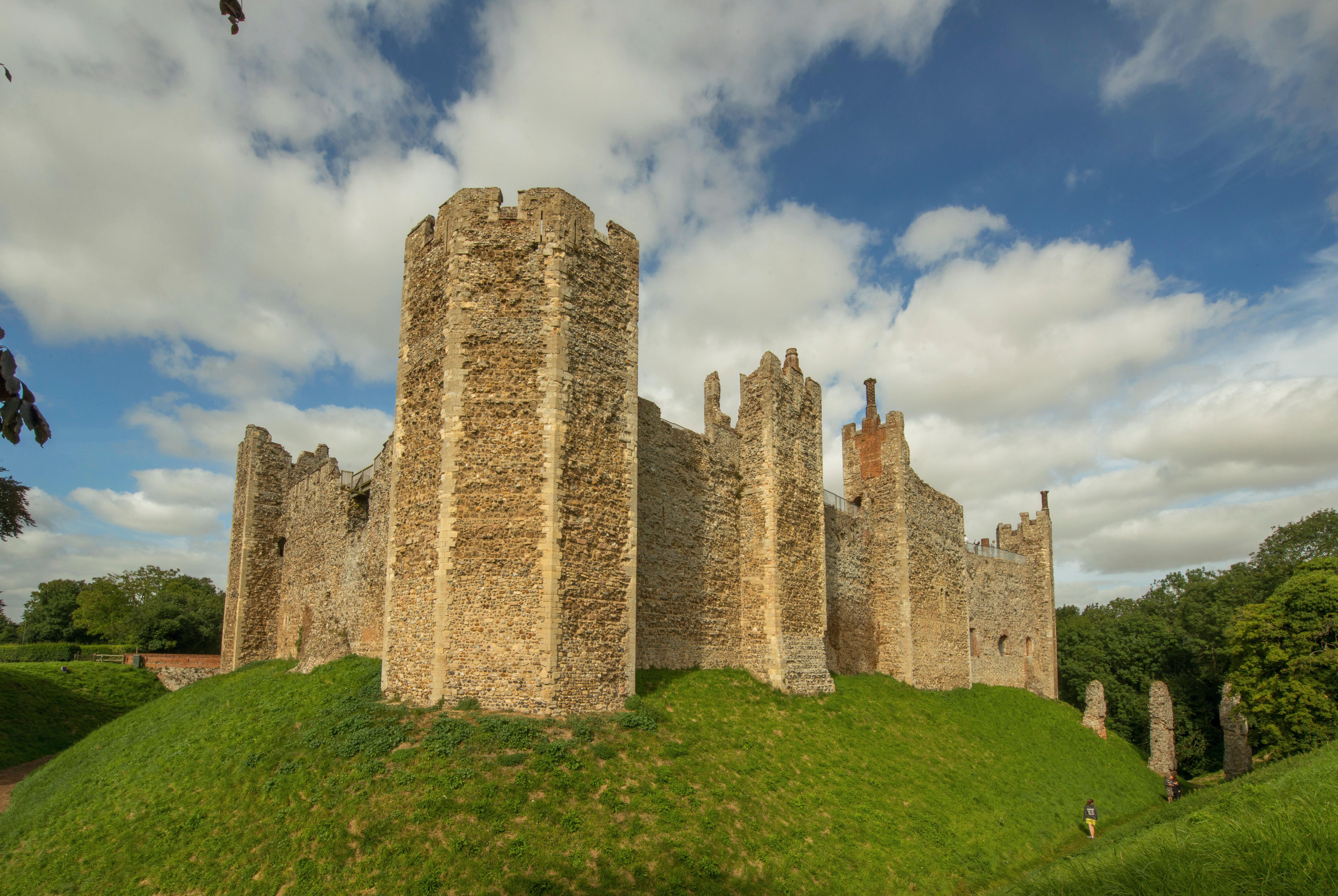
Framlingham is Ed Sheeran's home town. Castle on a Hill was released in January 2017. It has spent 53 weeks in the charts (including five weeks at number two) and has gone triple-platinum.
-
10. The charge of the light brigade took place during which 19th-century battle?
Answer: Battle of Balaclava
Although Britain and its ally France were victorious in the Crimean War, the Charge of the Light Brigade has gone down as one of history's great military blunders. Miscommunication led to a small force of light cavalry to charge along a well-defended valley and into a Russian artillery battery. The 670-strong brigade suffered over 250 casualties.
-
11. Old Wardour Castle in Wiltshire was used as a location in which 1991 film?
Answer: Robin Hood: Prince of Thieves
Old Wardour Castle was used as the setting for the ruin of Locksley Castle, Robin's family home. The castle's advantage for the film-makers was that, depending on the angle from which it is viewed, it appears either intact or ruined.
-
12. Who is known as the 'saviour of the Wall' (pictured) after he excavated and protected Hadrian's Wall in the 19th century?
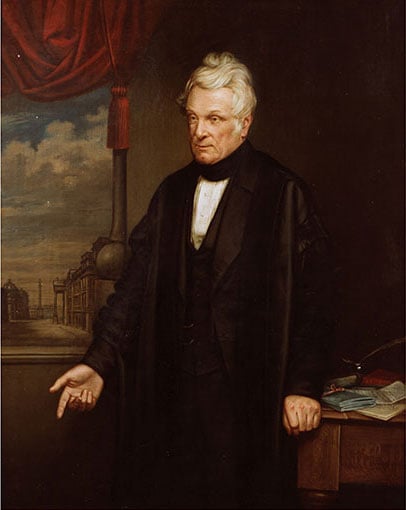 Answer: John Clayton (1792-1890)
Answer: John Clayton (1792-1890)John Clayton (1792-1890) was the town clerk of Newcastle upon Tyne, an antiquarian and a lawyer. By the time he died, he owned five forts along Hadrian's Wall, along with most of the wall within this 20-mile stretch. He stopped quarrying near the wall, prevented the use of Roman stone for new buildings, and moved buildings away from the archaeological work that he undertook.
-
13. Who is the oldest surviving London Blue Plaque to?
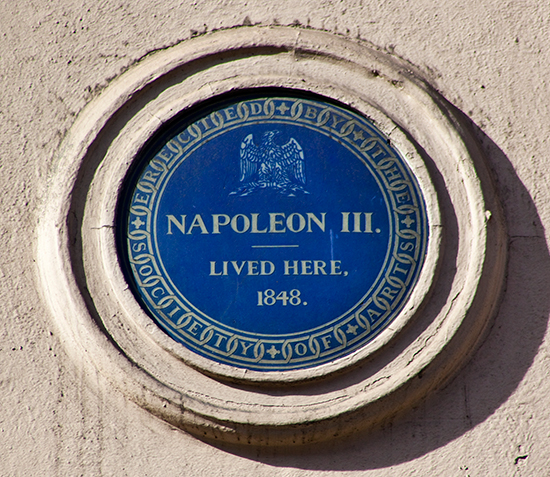 Answer: Napoleon III
Answer: Napoleon IIIThe plaque to Napoleon III, the last French emperor, was installed in 1867. The design includes the French imperial eagle.
It is said that he left his London home in King Street in a great hurry to return to France when he heard of the overthrow of King Louis Philippe in 1848. His bed was left unmade and the bath was full of water.
-
14. What did Britain begin to use on 14 September 1752?
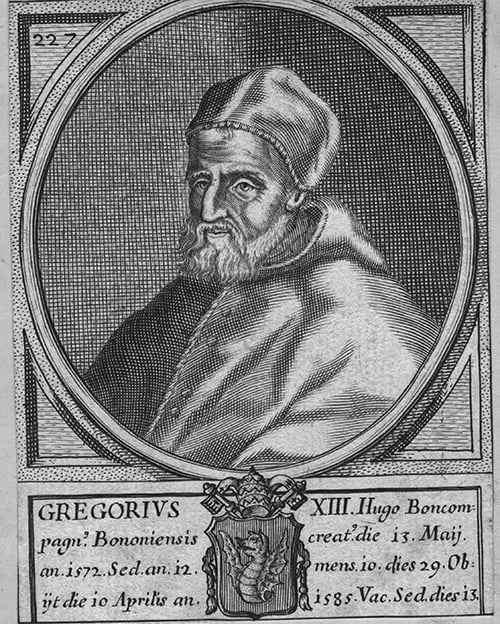 Answer: The Gregorian calendar
Answer: The Gregorian calendarThis calendar was introduced by Pope Gregory XIII in 1582 in order to ensure Easter celebrations occurred at around the same time every year, when early Christians celebrated it.
A development of Julius Caesar's Julian calendar, it was initially met with suspicion by many Protestant countries and was only adopted by Britain in 1752.
In order to be in line with other countries that had already converted to the Gregorian calendar, 11 days were skipped, and Wednesday 2 September was followed by Thursday 14 September - effectively wiping 3-13 September 1752 from British history.
-
15. Sorviodunum was the Roman name for which settlement, which was thought to be a fort in Roman times and later housed a medieval castle?
Answer: Old Sarum
An Iron Age hillfort may have been established at the site, in Salisbury in Wiltshire, in about 400BC. It was occupied shortly after the Roman conquest of Britain, which took place in AD43.
-
16. Which animals have been used for hundreds of years at Carisbrooke Castle on the Isle of Wight to draw up water in the well-house?
Answer: Donkeys
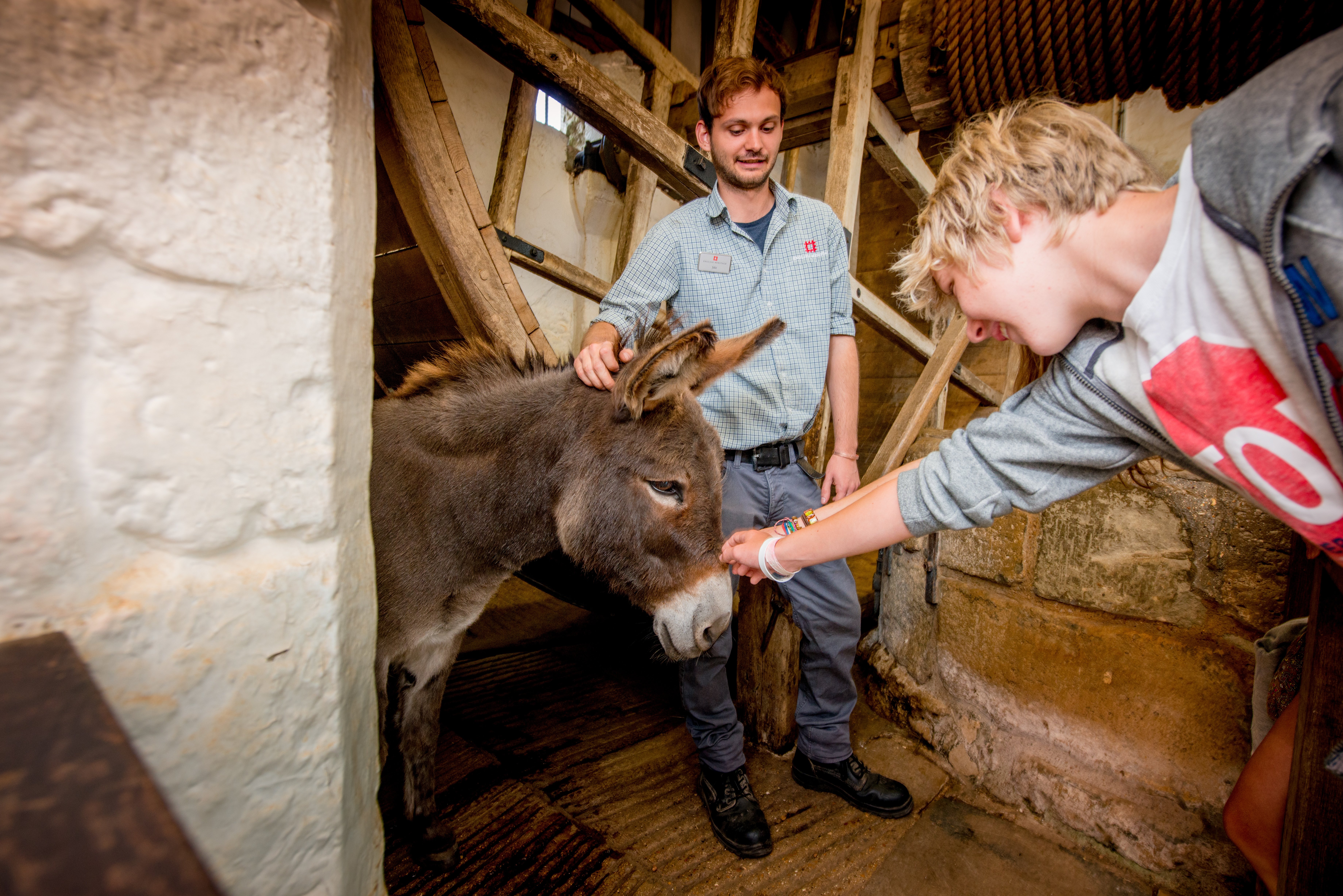
There have been donkeys at Carisbrooke since the 1690s. They are incredibly strong and intelligent animals, which is why donkeys have been used throughout history as a preferred working animal.
-
17. Which castle was the childhood home of Richard III?
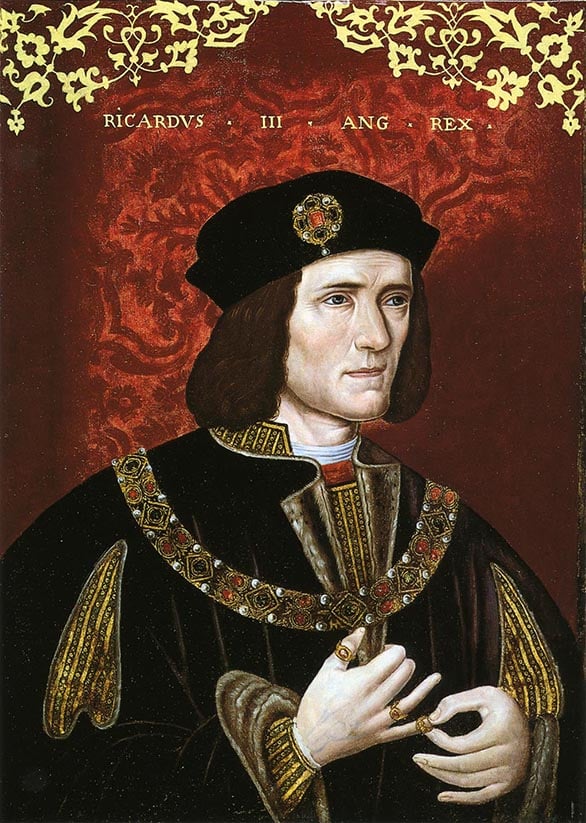 Answer: Middleham Castle
Answer: Middleham CastleBuilding of the present Middleham Castle, in North Yorkshire, was started some time in the late 12th century. Richard entered the household at Middleham at the age of 13, in 1465, and remained there until 1468.
-
18. How many years did it take for Sir Francis Drake to complete the first circumnavigation of the globe in 1580?
Answer: Three years
Though the second person to circumnavigate the world in one expedition, the legendary seafarer was the first to do as captain for the entire duration - the first from 1519 to 1522 saw Ferdinand Magellan killed and succeeded by Juan Sebastián Elcano.
On the orders of Elizabeth I, Drake departed from Plymouth aboard the Pelican in 1577, reaching the southern tip of South America where the Drake Passage now bears his name. He then sailed up the west coast of the American continent, before heading back to England via Indonesia and the Cape of Good Hope, with some looted Spanish gold in tow and a new name for his ship, the Golden Hind.
-
19. Elizabeth I granted which castle to one of her favourites, Robert Dudley, Earl of Leicester?
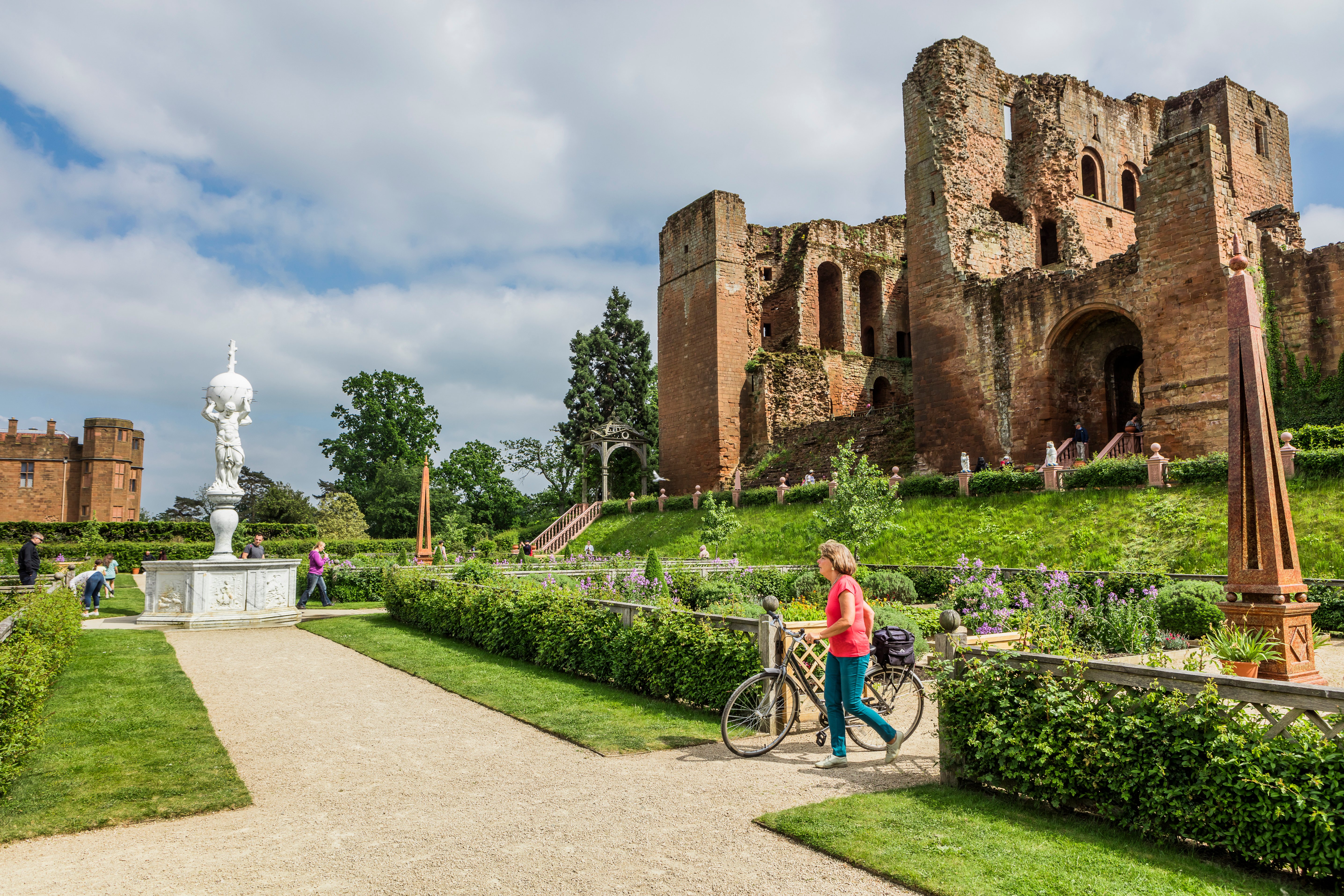
Answer: Kenilworth Castle and Elizabethan Garden
In 1563, Elizabeth I granted Kenilworth to Robert Dudley, who embellished both the castle and its surrounding landscape to impress the queen. She visited four times and her visit in 1575 was the longest she made to any courtier during her reign.
-
20. When did the last Romans leave Britain?
Answer: AD410
By the early 5th century, the Roman Empire was in turmoil. Roman citizens in Britain appealed to the emperor, Honorius, for help when the country was faced with invasion by Picts and Saxons. But Honorius needed the Roman legions in Britain to defend other parts of the Empire that were under attack from barbarian tribes. He drafted a letter to the people of Britain telling them they must 'look to their own defences', thus ending Rome's official ties with Britain.
-
21. Which Celtic queen led a rebellion against the Romans in AD60?
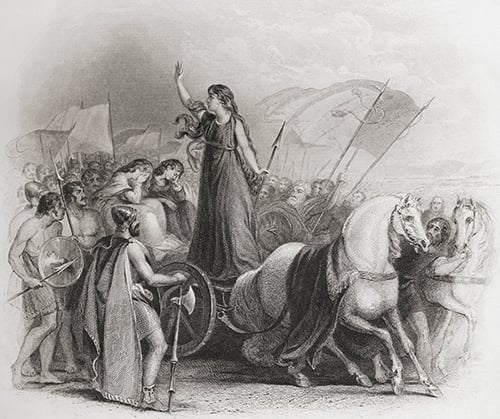 Answer: Boudicca
Answer: BoudiccaBoudicca became the leader of the Iceni tribe, who lived in modern-day Norfolk and were initially allied with the Romans during the invasion of AD43.
However, when she inherited the crown after the death of her husband Prasutagus, the Romans seized Iceni property, raped Boudicca's daughters and publically flogged the queen.
Incensed, Boudicca led a huge army of Celtic warriors, destroying Colchester, London and St Albans in AD60, killing tens of thousands.
The greatly outnumbered Roman army set off from north Wales to confront Boudicca's forces, decisively defeating them in the Battle of Watling Street.
-
22. To be awarded an Official English Heritage Plaque, the proposed recipient must have died a minimum of how many years ago?
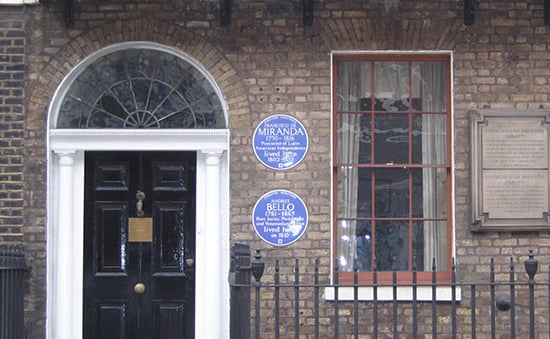 Answer: 20 years
Answer: 20 yearsIn order for someone to be nominated for a blue plaque, at least 20 years must have passed since their death.
In addition, the building associated with the figure must survive in a form that the commemorated person would have recognised, and be visible from a public highway.
-
23. Which Roman emperor invaded Britain without success in both 55 and 54BC?
Answer: Julius Caesar
Britain was an unknown land across the sea when Caesar invaded the south of England as part of the Gallic Wars (58-50BC). Caesar's army defeated British tribes but then left to fight elsewhere
-
24. Why did Hailes Abbey in Gloucestershire become one of the most significant pilgrimage sites in medieval England?
Answer: It had a relic consisting of what was believed to be a portion of the blood shed by Christ on the Cross
Hailes Abbey received the relic in 1270 and it was mentioned in The Pardoner's Tale by Chaucer, part of The Canterbury Tales. As a result of the Suppression, the shrine to the Holy Blood was destroyed and the abbey fell into ruin.
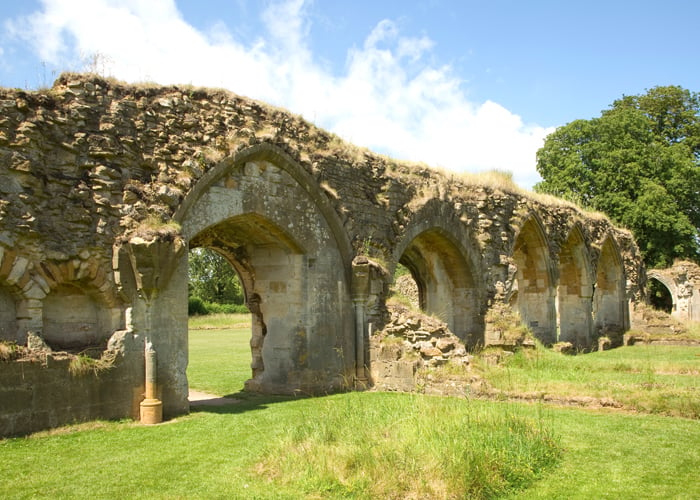
-
14. The architecture of which Cistercian abbey may have inspired the design of the rose window at York Minster?
Answer: Byland Abbey in North Yorkshire
Byland Abbey is an outstanding example of early Gothic architecture and it became one of the largest monasteries of the Cistercian order in Britain. The remains of the buildings are important evidence of the development of northern monastic architecture between the late 12th and late 15th centuries.
-
26. What caused considerable damage to Whitby Abbey in 1914?
Answer: The shelling of Whitby by the German High Seas Fleet
The west front of the abbey church was hit during the bombardment, causing much of it to collapse. However, the damage was later repaired using the original masonry.
-
27. In what year was Albert granted the official title of Prince Consort?
Answer: 1857
Prior to this, Albert was known as HRH Prince Albert.
-
28. Netley Abbey was the inspiration for which novel, published in 1817?
Answer: Northanger Abbey by Jane Austen
After the Suppression of the Monasteries, Sir William Paulet transformed the abbey into a mansion house, which was occupied until 1704. After the house was abandoned, it became overgrown with trees and ivy. Many authors and artists visited the romantic ruin, including Austen, the writer Thomas Gray and the painter John Constable.
-
29. What was Albert’s title before marrying Victoria?
Answer: Prince Albert of Saxe-Coburg and Gotha.
Albert was the second son of Ernest I, Duke of Saxe-Coburg-Saalfeld, and his wife Louise of Saxe-Gotha-Altenburg. The Saxon Duchy of Saxe-Coburg-Saalfeld was closely connected with many European monarchies.
-
30. Can you unscramble the names of these four English Heritage castles? ZEALOUSLY BATCHED CASH / RATTLESNAKES DOWNLOAD DANCE BOP / HEADWATERS CHART METALWORKING / GRANDFATHERS GLEEFUL CHOIR
Answers:
Ashby de la Zouch Castle
Beeston Castle and Woodland Park
Warkworth Castle and Hermitage
Farleigh Hungerford Castle
-
31. What animal played a decisive role in the Battle of Hastings?
Answer: The horse
The English army fought on foot at the Battle of Hastings, and ultimately could not withstand the charges of the mounted Norman knights. Although the horses ridden by the Normans were small by modern standards (no bigger than ponies), the knights had substantial wooden saddles and well-designed stirrups, giving their lances impressive striking force.
-
32. Which king of England died on 5 January 1066, leaving no direct heirs?
Answer: Edward the Confessor
King Edward the Confessor died on 5 January with no direct heirs. Earl Harold of Wessex, the Confessor’s brother-in-law and a powerful noble, was proclaimed king and crowned at Westminster Abbey the next day. But there were two other rival claimants to the throne: Harald Hadrada, King of Norway, and William, Duke of Normandy. Both prepared to invade to capture the English throne.
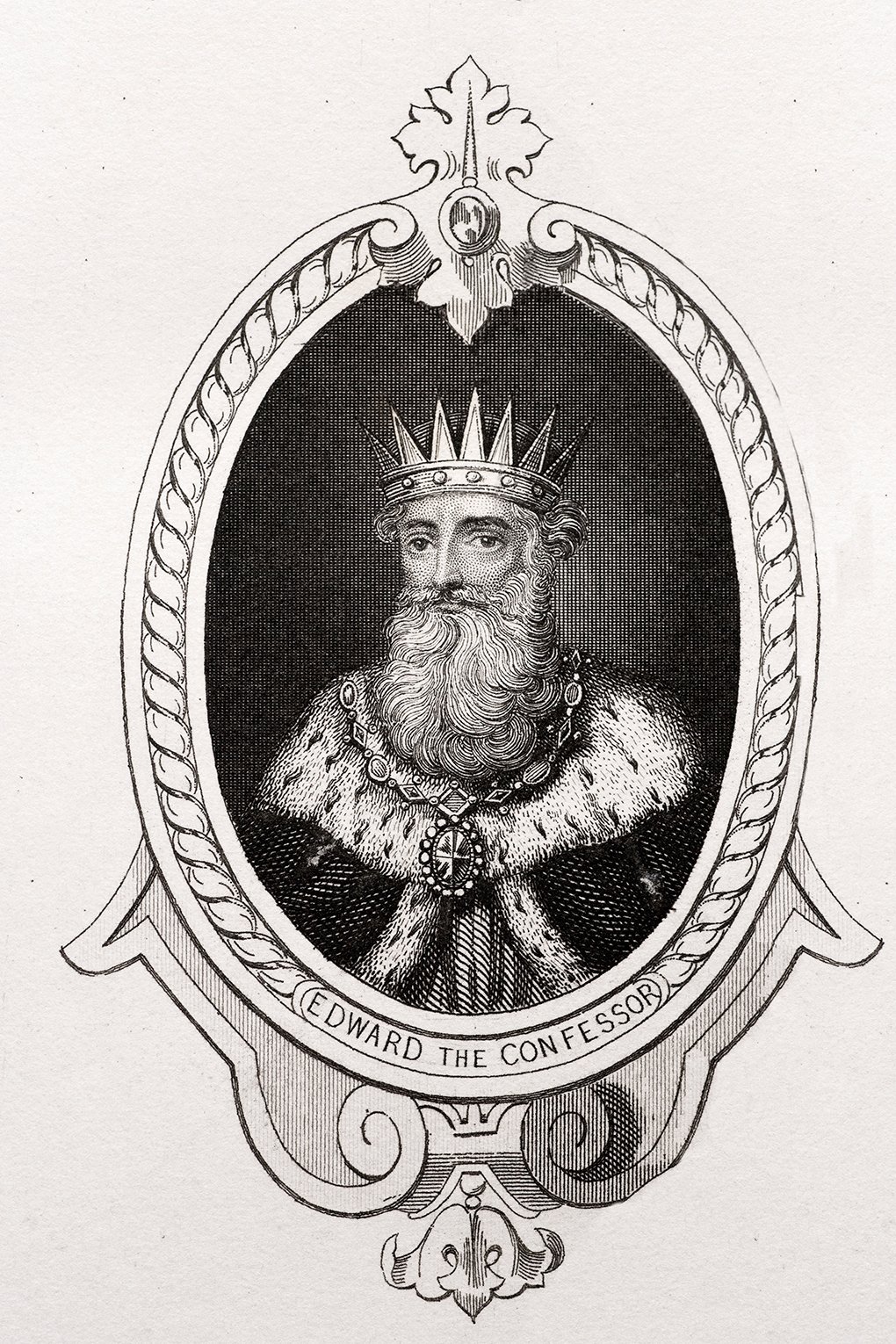
-
33. From where was the Dunkirk evacuation masterminded?
Answer: Dover Castle
-
34. What was the code name for the evacuation of Dunkirk, 1940?
Answer: Operation Dynamo
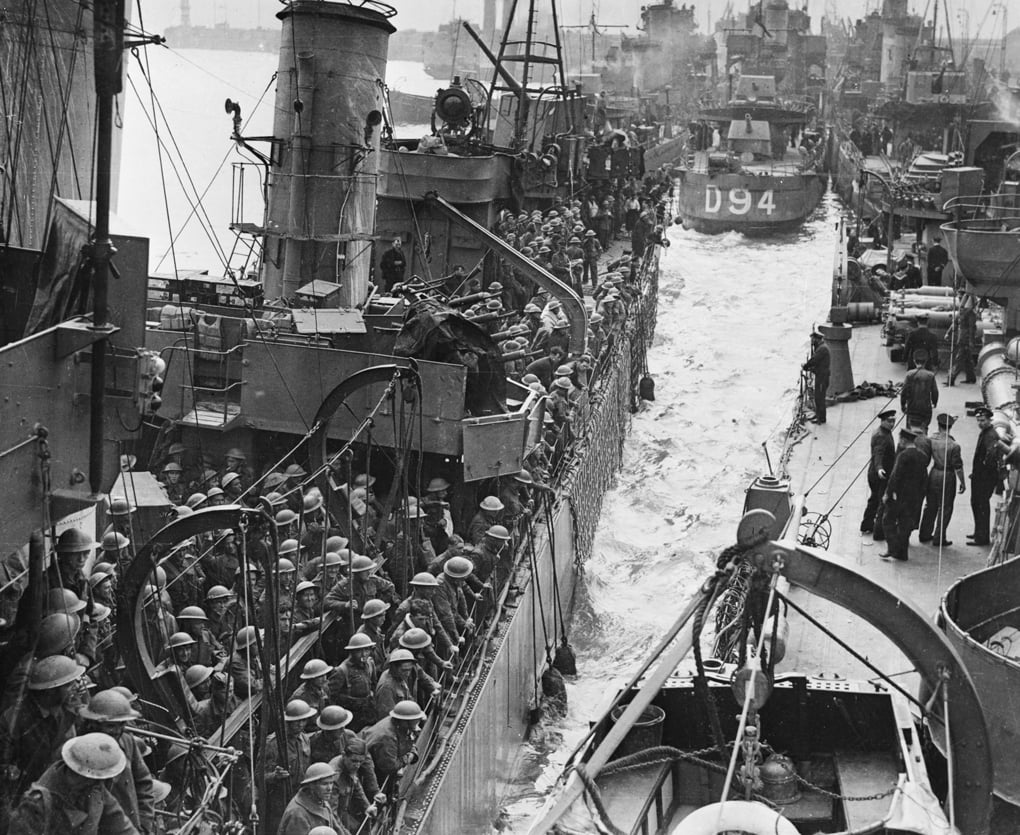
-
35. For what purpose did Albert build the Swiss Cottage at Osborne?
Answer: The entertainment and informal education of the royal children.
Built between 1853 and 1854, Swiss Cottage was a wooden chalet in Alpine style, and was used by the royal children as a play house and to also teach them how to cook, garden and keep house. They had a museum inside the cottage, grew vegetables in the gardens and played in a miniature fort next to it.

-
36. What was the official cause of Albert’s death in 1861?
Answer: Typhoid.
Albert was diagnosed by his doctor William Jenner as having typhoid fever on 9 December 1861. He died on 14 December at Windsor Castle, with the queen and five of their children present. Historians have queried this diagnosis, however, saying that the stomach pains Albert suffered with in the two years before his death could have been symptomatic of cancer, renal failure or Crohn’s disease, and be the actual cause of his death.
-
37. What unusual action did Victoria do with Albert’s ear?
Answer: She had an ornamental plaster cast made of it.
Made around 1860, the cast was mounted on red velvet and an ebony base. It’s now on display in the Queen’s Bedroom at Osborne.
-
38. Why did William build the Benedictine abbey at Battle?
Answer: To atone for the bloodshed of the battle
Even by the standards of the Middle Ages, the Norman Conquest was exceptionally bloody and brutal. William and his supporters feared they might go to hell as a consequence, William founding Battle Abbey as a penance and as a symbol of his great victory. The abbey was founded on the top of the hill where the battle was fought. Its high altar marks the place where Harold was killed – there is now a stone marker on the spot.
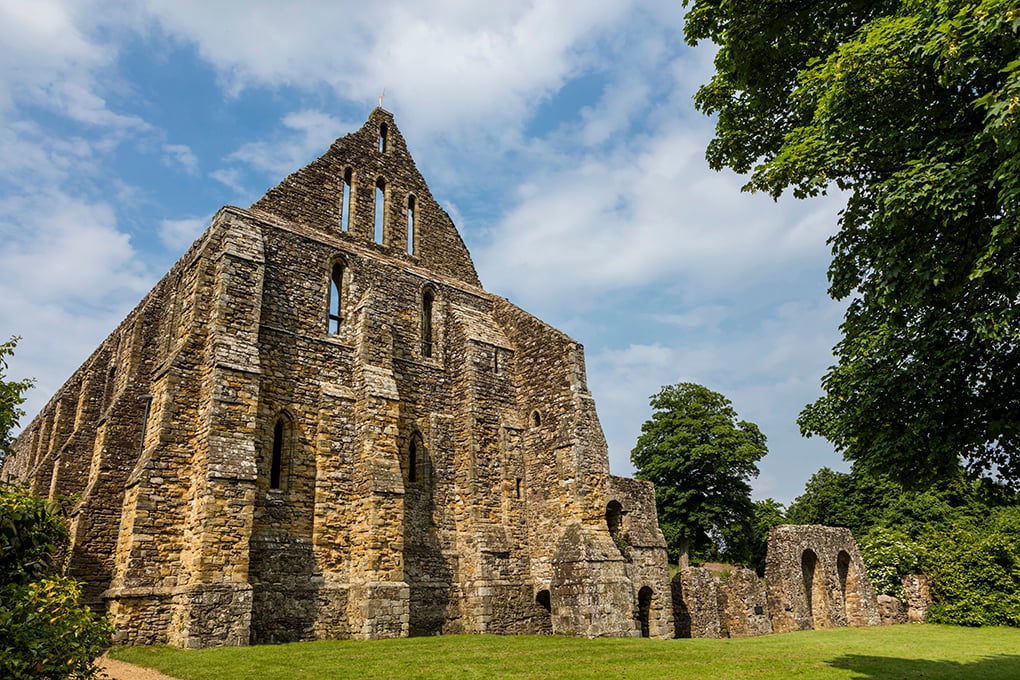
-
39. Whom did Harold defeat in a battle at Stamford Bridge, just before the Battle of Hastings?
Answer: Harald Hardrada
On 25 September, Harold defeated Harald Hadrada, King of Norway and claimant to the English throne, in a hard-fought battle at Stamford Bridge, near York.
-
40. How many tons of iron were used to build the Bridge?
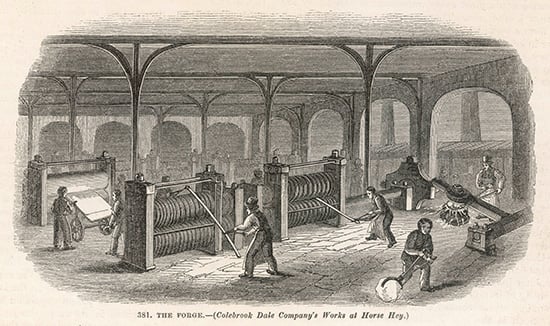 Answer: 378 tons
Answer: 378 tonsAlthough Darby commissioned many paintings and engravings of the finished bridge, a lack of images or eyewitness accounts meant that, for over 200 years, little was known of exactly how Darby managed to erect this structure of almost 400 tons. However, in 1997 a small watercolour sketch by Elias Martin, which illustrated the building of the bridge, was discovered in a Stockholm museum and revealed much about the building process.
Image: Forge at Colebrookdale, Shropshire (now spelt Coalbrookdale) - circa 1858.
-
41. How were Victoria and Albert related?
Answer: They were first cousins.
Victoria was the daughter of Princess Victoria of Saxe-Coburg-Saalfeld, also known as the Duchess of Kent. Albert was the son of Princess Victoria’s brother Ernest.
-
42. Which English Heritage garden includes a cricket pitch still in use today?
Answer: Audley End House and Gardens
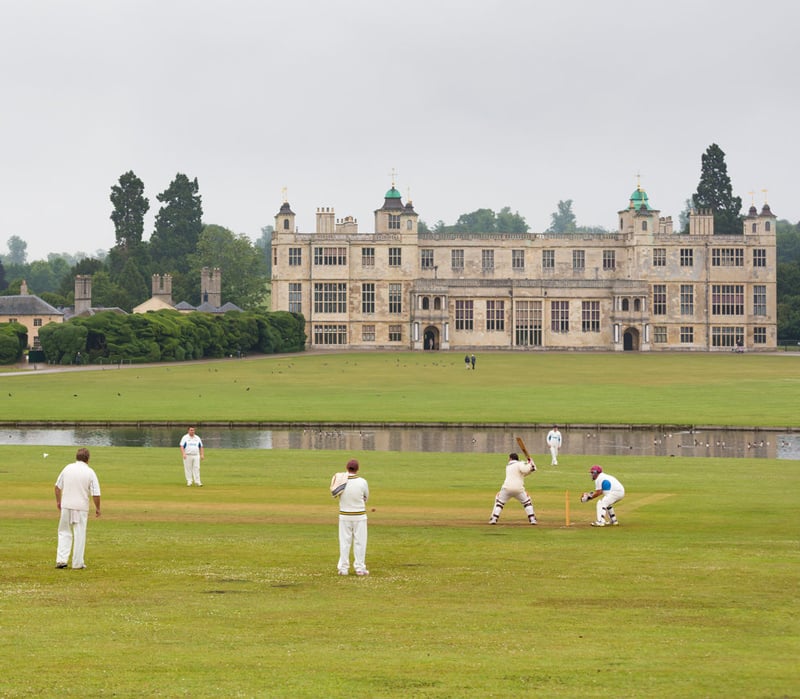
-
43. What was Wrest Park used for during the First World War?
Answer: An auxiliary hospital
-
44. William’s forces killed large numbers of Englishmen by twice using what tactic?
Answer: Feigning retreat
William's foot soldiers and cavalry drew English soldiers from their positions by twice feigning retreat before turning around and counter-attacking. The result was that Harold's army was split, giving up the high ground and breaking its shield wall. (Inconsistencies in the sources mean that we can’t be sure that William’s army feigned retreat twice. The Carmen de Hastingae Proelio, for instance, describes William’s army as feigning retreat and then genuinely retreating.)
-
45. In which year were women granted equal voting rights with men?
Answer: 1928
Some women were given the right to vote in 1918, as a result of the Representation of the People Act. But it only applied to women over the age of 30 who met a property qualification. Although 8.5 million women met this criteria, it only represented 40 per cent of the total population of women in the UK.
-
46. How did Victoria preserve her modesty when going for a dip in the sea from the beach at Osborne?
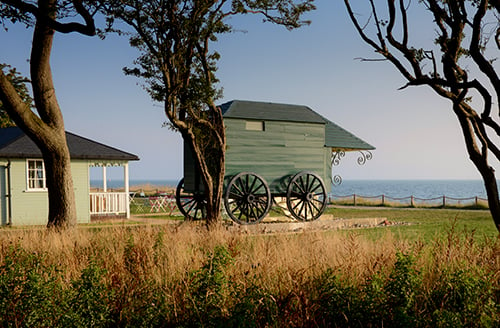 Answer: By using a bathing machine
Answer: By using a bathing machineVictoria regularly went in the sea at Osborne beach, where she had a bathing machine.
She would get changed in the wheeled hut, which would then be run into The Solent, allowing her to descend the steps into the water without being seen in her swimming costume.
Victoria's bathing machine, which has been fully restored, can still be seen at Osborne today.
-
47. Dido Belle was a mixed-race woman who was raised as part of an aristocratic family in Georgian Britain at the height of the slave trade. Where did she live?
Answer: Kenwood
Dido Belle was raised by Lord Mansfield, the Lord Chief Justice of England and Wales, who presided over landmark court cases in the history of slavery and the slave trade. Evidence suggests that she was brought up as a lady rather than as a servant.
-
48. In which year did the Roman invasion of Britain take place? AD23, AD33, AD43 or AD53
Answer: AD43
Aulus Plautius assembled an army of four legions, which, along with a number of auxiliary regiments, landed at Richborough in Kent in AD43. The British, under Togodumnus and Caratacus, were taken by surprise and defeated.
-
49. Whose discovery made the mass production of cast iron viable?
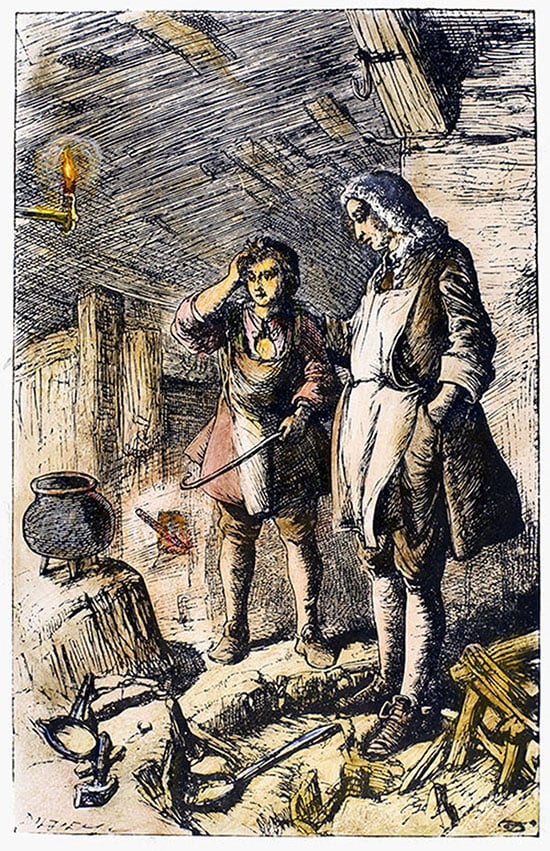 Answer: Abraham Darby I.
Answer: Abraham Darby I.Abraham Darby (1678-1717) was the first and best known of a succession of men from the Darby family who carried the same name.
Born into an English Quaker family who played an important role in the Industrial Revolution, Darby developed an innovative method of iron smelting. Using coke made from local coal to fuel furnaces rather than charcoal, Darby's discovery made the mass production of cast iron economically viable. With this breakthrough in production, the iron trade in Britain accelerated and local industry began to flourish.
Image: Abraham Darby at his forge and the discovery of cast iron. Etching, English, 19th century.
-
50. Who built the castle at Tintagel in the 1230s?
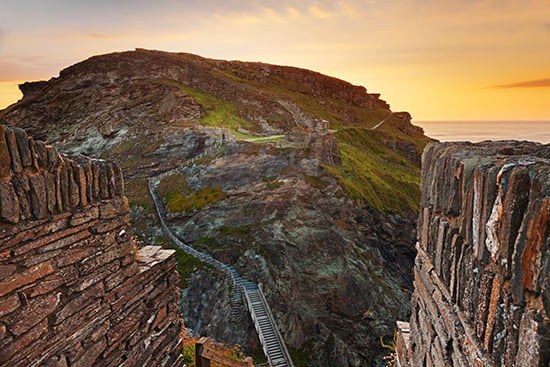
Answer: Richard, Earl of Cornwall
The Earl of Cornwall built a castle at Tintagel even though the site was of no military value - instead, he seems to have been inspired by the myths surrounding the location.
In order to secure the plot of land on the north Cornish coast, he swapped it for three of his manors.
Image: A view of Tintagel Castle.